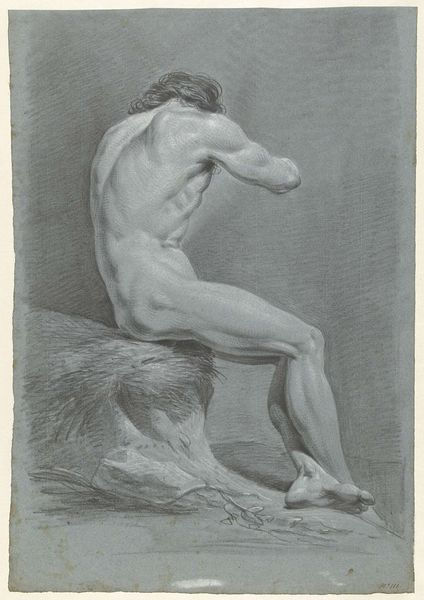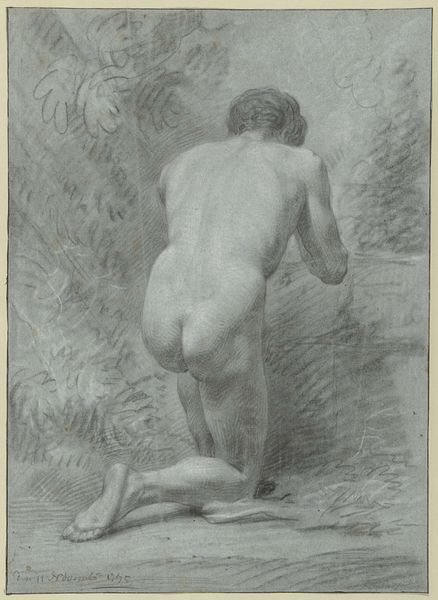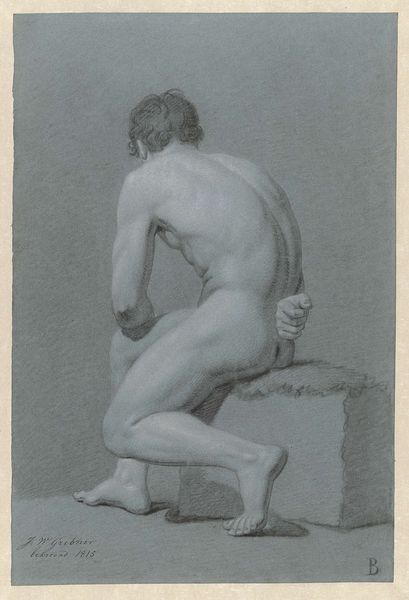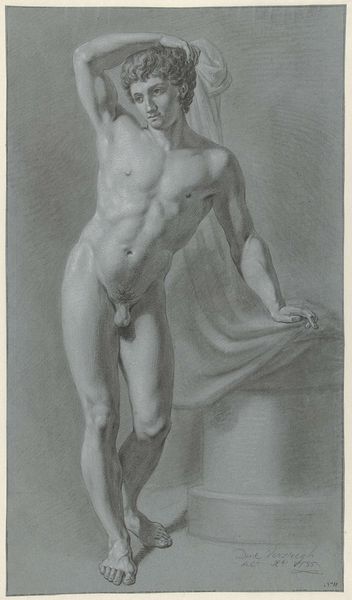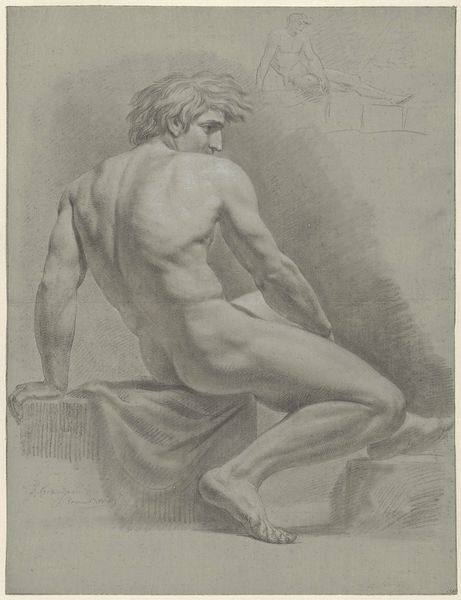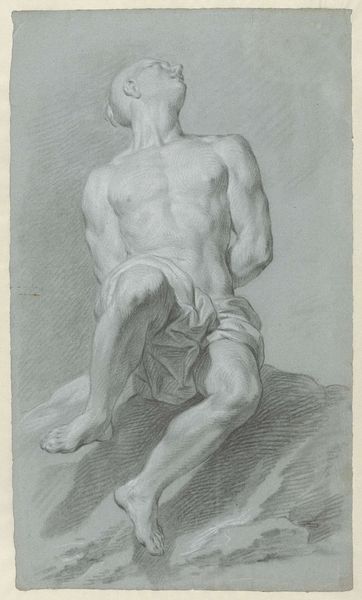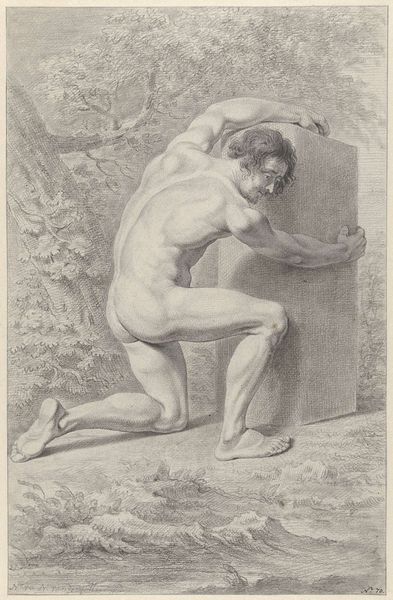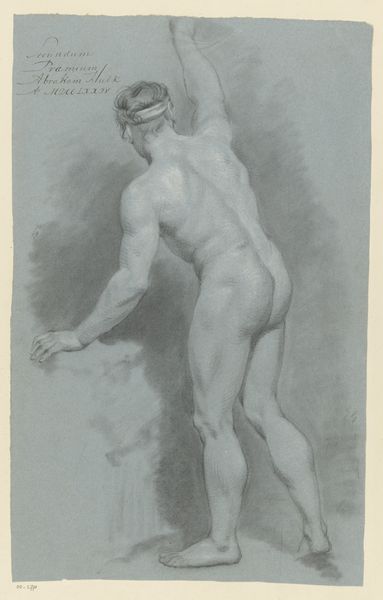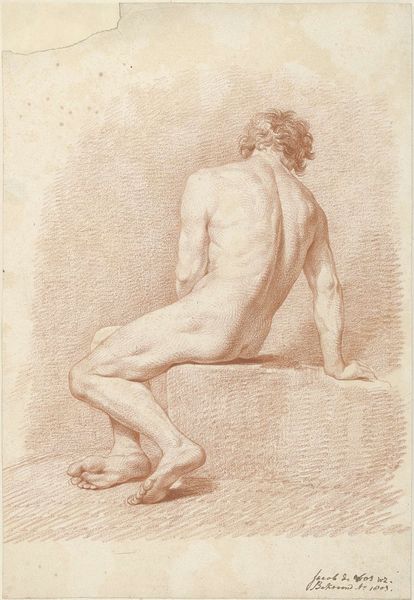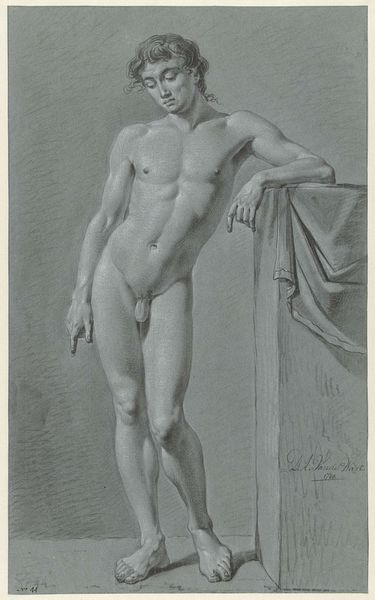
Zittend mannelijk naakt met opgetrokken knie, van opzij, naar rechts Possibly 1776
0:00
0:00
drawing, pencil, charcoal
#
portrait
#
drawing
#
charcoal drawing
#
pencil drawing
#
pencil
#
portrait drawing
#
charcoal
#
academic-art
#
nude
#
portrait art
#
realism
Dimensions: height 480 mm, width 297 mm
Copyright: Rijks Museum: Open Domain
Jean Grandjean created this drawing of a seated male nude with raised knee using graphite. The image taps into the idealizing aesthetic of the late 18th century and the renewed interest in classical antiquity. This piece likely originates from France during a period where the Academy played a central role in dictating artistic standards. The visual language here – the smooth lines, the idealized body, and the classical reference in the hair – speak to the Academy's emphasis on form and its role in promoting a certain vision of beauty. The male nude becomes a vehicle for exploring beauty and ideal form. The image presents a challenge. Is it simply an exercise in idealization, or does it reflect deeper social and cultural values concerning beauty, masculinity, and the body in the late 18th century? Delving into the archives of the French Academy, art criticism of the time, and the social history of aesthetic ideals, all help to unlock a fuller understanding. Art, after all, is made in a context, and it's through understanding that context we can truly appreciate its complexities.
Comments
No comments
Be the first to comment and join the conversation on the ultimate creative platform.
